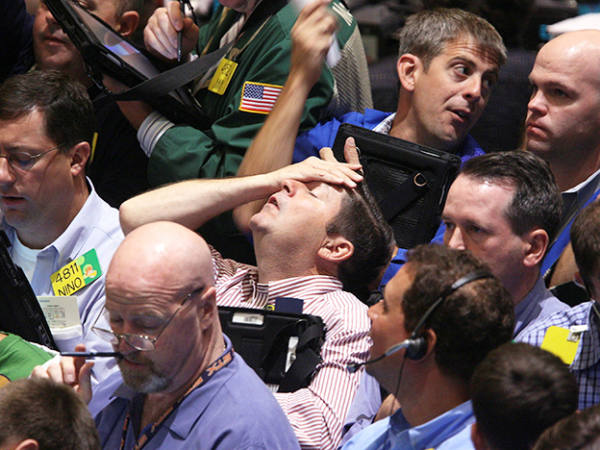The leading index of the era had slumped dramatically, companies were fretting over a Conservative government’s Excess Profits Levy (EPL), inflation was on the march and interest rates were climbing. Even the name Moderna had become familiar to stock market investors for the first time – albeit in this case the progenitor was not biotech breakthroughs but the wool developed by the recently IPO-ed Thomas Ratcliffe & Co.
Textiles aside, the proximate cause of all these events was also similar, in terms of its significance at least: an era-defining calamity from which the world was still emerging.
The second world war may have been over for more than six years, but its impacts continued to loom large. Shortages and supply chain problems were plentiful, and second-order impacts were also becoming apparent. The start of the Korean war, itself sparked from the embers of the larger conflict, led to a British rearmament programme that was bearing fruit for the likes of aircraft manufacturer de Havilland, but causing problems elsewhere in the corporate world.
The net result of all this uncertainty was a material drop in share prices for the first time in over a decade. The FT 30, then the leading index of the day, was down 20 per cent from its peak at the time of the King’s death.
Against this febrile backdrop, the IC, then as now, offered a mix of company reporting and investment analysis. On the latter, the mood was suitably circumspect. Our Candidus columnist thought the moment was right for a rare look at gold. The precious metal had “suddenly become respectable again” in a period when currency devaluations were re-emerging, albeit the asset class was still far from fashionable. To that end, Candidus cited the Norwegian dramatist Henrik Ibsen’s comment that “the majority is always wrong; the minority is always right” to make a contrarian call for making an investment.
The caution sparked by the proposed EPL, which would duly be introduced by chancellor Rab Butler in March 1952, was apparent elsewhere in that week’s edition. Two pages are dedicated to finding companies that were growing earnings enough to be able to withstand the levy and maintain their all-important dividends.
As that implies, stock screens are not a new IC invention: they were also in existence, in rudimentary form, 70 years ago. The select group of companies that qualified on 9 February included a couple of familiar names: Glaxo Laboratories and Smith & Nephew.
One rule of the 9 February screen was that “over the past 12 months, the market action of the shares must have been upwards” – a requirement that, given the prevailing state of the market at the time, made it “not a little remarkable” that enough shares could be found at all, in the words of author Austin Friars.
That methodology suggests momentum was an important factor in Friars’ assessment. But an attempt to think differently is also apparent: Friars said the EPL might well have already been factored in to share prices, and there is “reason to believe we have left the era of plunging prices behind us”. He was right: the FT 30 would bottom out just two percentage points lower and embark upon a new, five-year bull market that summer. The stock market troubles of 1951 would prove little more than an interregnum.
Company business
All the same, for all the macroeconomic tumult, the corporate world of the early 1950s, viewed through today’s lens, has an undeniable ring of mundanity to it.
Corporate innovations looked a little different. Both the IC and the Stock Exchange Gazette (which was merged into the IC in 1967) of the day remark upon the introduction of note-counters at Midland Bank, devices the company “claimed to be infallible” and touted, not unreasonably, as a way to boost productivity. A brief note in the Gazette’s pages highlights an all-in-one kitchen sink and refrigerator unit, apparently notable for being “cased in a plastic material that can be accidentally kicked without breaking”.
Not that all was well in the world of cold storage. A second successive dividend cut by a listed refrigeration company recorded in the IC’s pages was blamed on the combined impact of an increased purchase tax with the limits on hire purchase introduced in January 1952.
These restrictions, designed to limit domestic steel consumption at a time of raw material shortages – and hence boost exports and improve the balance of payments – had a similar impact on other appliance manufacturers, such as those involved in the production of television sets. Harold Macmillan’s observation that Britons have “never had it so good” was, after all, still five years away.
It was a different age for the everyday shareholder, too. Company reports were a far cry from the sprawling, labyrinthine affairs that often appear nowadays – but too little information can be just as frustrating as too much. The accounts of the 1950s often required the diligent shareholder to make leaps of logic. The first Stock Exchange Gazette of the Queen’s reign alludes to this in an analysis of British Home Stores’ results, the author having to infer that “allowing for lower profit margins on some goods, it seems that turnover must have increased considerably”.
All the same, there were companies that went the extra mile, and those that fell particularly short. The Leyland Motors accounts of 1952 were impressive enough for the IC to commend their “rare clarity” as well as the “exhaustive explanatory notes” and a detailed statement by the chairman. The figures themselves, incidentally, suggest a degree of pricing power that would be highly valued today: turnover increased by almost 8 per cent, a result of “higher prices rather than fundamental progress,” in our words.
At the other end of the scale was the Law Debenture IT, of which the IC said later in the year: “We would be in a better position to pass judgement if the board supplied the security classifications that are usual in IT reports.”
In the event, of course, it was Leyland Motors that suffered an ignominious end two decades later in its post-merger British Leyland Motor Corporation form. Law Debenture, by contrast, is still going strong. Having begun life in 1889, it’s not far off its own double platinum jubilee.
Sales restrictions and shortages
Private investors’ opinions on companies like these held much more sway in the mid-20th century: back then, individual shareholders controlled over 50 per cent of the UK market. Income investing was the order of the day, and as often as not that meant bond issues as well as equity dividends. The reopening of the “non-Reich” German bond market, after a three-month pause brought about by a governmental administrative blunder, prompted heavy buying in the opening days of February. Bearbull – then writing for the Gazette – thought there was still value to be had in the aftermath of this increased interest.
But there was caution, too, on the outlook for buyers of overseas debt. “The foreign bondholder’s is a thorny path”, the IC commented in a piece on Costa Rica bonds. Another type of German debt, in this case ‘Potash’ loans, was seen as more reliable, but here rumours of a renegotiation of contract terms had columnists worried.
The most notable overseas development in the world of finance, however, was the 200 per cent devaluation of the Indonesia rupiah the previous week. That was accompanied by the imposition of new duties on rubber exports – which can’t help bring to mind modern-day Indonesia’s recent restrictions on overseas sales of palm oil.
Then, as now, shortages and sudden reversals in demand patterns had an impact on listed companies. An IC special report on the shipping industry in the 9 February edition remarked on sky-high freight rates, adding that shipbuilders had on hand far more work than they could comfortably deal with. But the prospect of accelerating demand combining with limited supply meant companies were “loath to lay off men as long as there is a chance of a better employment factor, as when the material is available, suitable men will not be”. Compare and contrast with International Consolidated Airlines’s recent struggles, borne out of its inability to rehire staff quickly enough following the mass layoffs seen during the pandemic.
A looser comparison with the present day stems from corporate misallocation of resources. In the early 1950s, this issue was most apparent in relation to the rearmament programme. A 1997 article in the Journal of Contemporary History sums up the consensus view: the rearmament was blamed as “a fatal check on the momentum of Britain’s economic recovery”, and even precipitated its industrial decline by damaging exports and industrial expansion.
That was already evident in the 1952 accounts of companies such as Vickers, which suggested to the IC that a “growing preoccupation with rearmament as against civilian production was involving it in transitory problems that clogged profit earning capacity”. Set against this kind of development, the post-pandemic shift in consumption patterns looks a trifling measure. All the same, US profit warnings from Target and Walmart last month were notable in that they stemmed from the retail giants' apparent unreadiness for a change in US consumer habits.
Worries over the state of the US economy were in evidence 70 years ago, too. The IC’s US correspondent highlighted remarks from the president of the Banker’s Trust Company, noting that “interest rates will go higher in 1952 because of persistent demand”. In response, the magazine acknowledged the possibility that even the motor of the world economy might catch a cold later on in the year.
On top of this, the correspondent reported that commodity prices were starting to go into reverse, and bearishness was “spreading not only among professional traders but also among businessmen in general”. In this context, it’s no surprise to read that railroad shares, that classic US defensive investment, were outperforming the market in the early weeks of the year.
As it happens, the modern-day investor most closely associated with these companies, Warren Buffett, was at the time just starting out in his first stockbroking job. Buffett has returned to prominence this year on the back of renewed concerns over the global economy. Students of investment history will know that those fears turned out to be shortlived in the early 1950s. Today’s investors will hope that proves another parallel with the present day.











